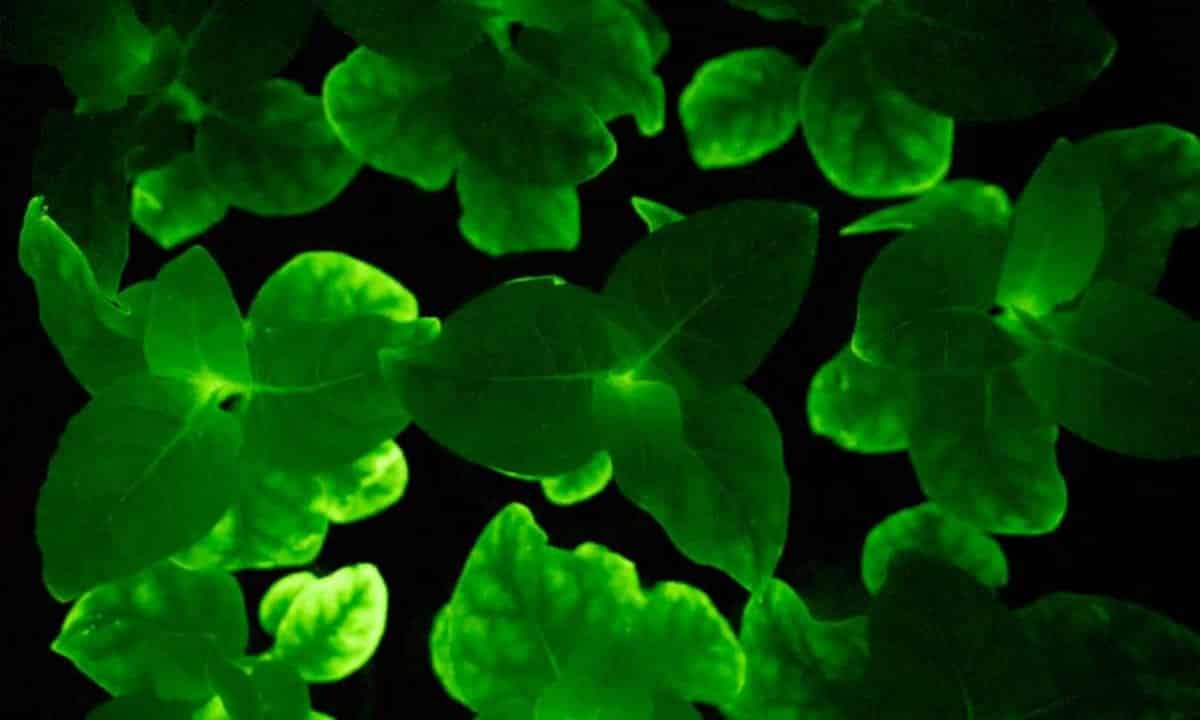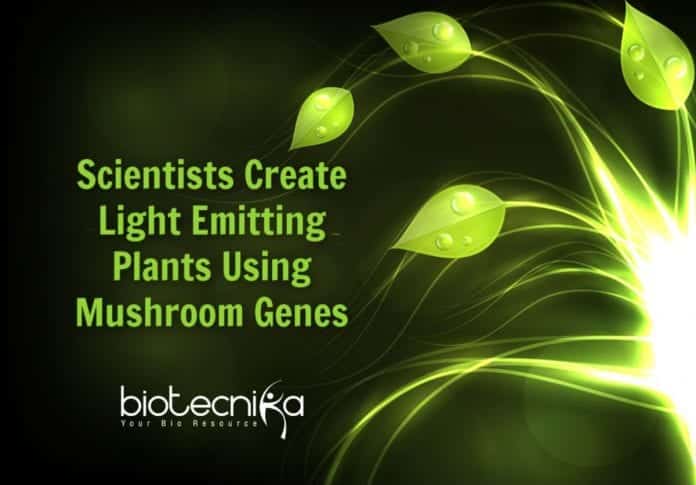Researchers developed light emitting plants in the laboratory, which emits an eerie green glow and look like foliage from a retro computer game.
This could not only add an unusual dimension to home decor but also open up a new way of exploring the inner mechanisms of plants.
The activities of different plant hormones over the lifetime of a plant in different tissues could be visualized in the future using this new technology. It could also help to study how plants respond to various changes in the environment and stresses such as wounding by herbivores or drought.
The researchers hope to bring this to the market in a few years after they made brighter ornamental plants with this technology and passed all safety regulations.

Bioluminescence is a phenomenon by which some microbes, mushrooms, and animals like honey fungi and fireflies glow. A chemical called luciferin inside the organism is responsible for this glow. When some enzymes act on luciferins, they release energy in the form of light. But bioluminescence is not usually present in plants.
This is not the first time scientists are creating glowing plants. Previous discoveries had led to suggestions like
plant-based street lights and self-illuminating Christmas trees. Few scientists incorporated bacterial genes for bioluminescence in plants, while some others delivered both the luciferins and enzymes into plants via nanoparticles.However, both approaches had drawbacks. The incorporation of bacterial genes involved complex processes, which resulted in a weak glow, while the delivery of luciferin via nanoparticles was expensive and not self-sustained. Also, the incorporation of bacterial genes turned out to be toxic to the plants.
The new research harness the process by which fungi emit light. Caffeic acid, a chemical naturally present in plants from which luciferin is produced, is crucial in this process.
Sarkisyan and a team of colleagues based in Russia and Austria published their results in the journal of Nature Biotechnology. The reported how four genes from Neonothopanus nambi, a bioluminescent mushroom was inserted into the genome of tobacco plants.
These genes are associated with the conversion of caffeic acid into luciferin through a series of steps resulting in the emission of light, before turning it back to caffeic acid.
These plants can glow in the dark as well as daylight, 10 times brighter compared to those produced using bacterial genes, and is visible to the naked eye.
But as the plants grew, the site of luminescence changed. As the leaves age, the luminescence decreased and concentrated on where the leaves damaged.
The team is planning to insert the fungal genes in the plant’s DNA near genes activated by certain hormones. This should let scientists see the tissues where the hormone is currently active as the light will come only from those tissues.
Rather than used in applications like plant-based street lights, this new technology could be mainly used by scientists, said Gary Foster, a professor in molecular plant pathology at the University of Bristol, who was not a part of this research.
“The challenge now is to figure out how to make this engineered bioluminescence responsive to specific environmental, developmental, chemical, or pathogenic stimuli,” said Prof John Carr, from the University of Cambridge. This new discovery of laboratory made light emitting plants could shed new light on fundamental biological processes.






























